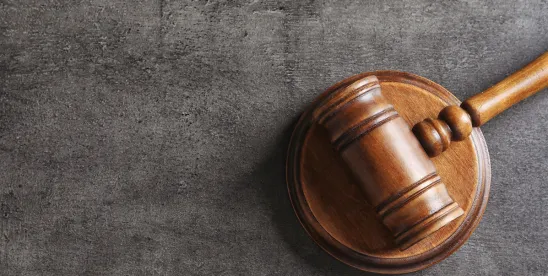Judge Bryson of the Federal Circuit, sitting by designation in the Eastern District of Texas, issued one of the clearest articulations to date in favor of granting a stay pending inter partes review.[1] Notably, in this case, claim construction had ended, discovery was nearly complete, and trial was set to begin in three months. The defendant, Samsung, had recently joined an instituted IPR covering six of the eleven asserted claims and moved to stay the district court proceeding.
Judge Bryson clearly articulated the three factors that district courts consider when analyzing whether or not to grant a stay:
1) whether the stay will unduly prejudice the non-moving party;
2) whether the proceedings had reached an advance stage, including the stage of discovery and whether a trial date is set; and
3) whether the stay will likely result in simplifying the case before the court.
After noting that the congressional intent of post-grant review before the patent office was to be a “quick and cost effective alternative[] to litigation” to provide a “faster, less costly alternative to civil litigation to challenge patents” and to be “an inexpensive substitute for district court litigation that allows key issues to be addressed by experts in the field” he proceeded to walk through the three factors.
Prejudice
Judge Bryson noted that the interest in “prompt enforcement of patents is entitled to weight” but that it is a factor that is present in every case where a patentee opposes a stay and “it is therefore not sufficient, standing alone, to defeat a stay motion.” As a non-practicing entity, a damages award post-stay would still fully compensate the plaintiff for any injury it suffered. Judge Bryson further noted that while Samsung had waited until after institution to request a stay, this could not factor against the stay as “it would have been virtually pointless for Samsung to have sought a stay before the IPR was instituted, as this Court would have almost certainly denied it.”
Further, while the parties had continued trial preparation in the absence of a stay, such efforts had inevitably moved the parties “preparation for the court case closer to completion for the time when the IPR is concluded and th[e] litigation resumes.” Notably, the plaintiff had consented to stays in other co-pending cases, which undercut the plaintiff’s argument that it would be prejudiced by a delay. While there may have been some prejudice to the plaintiff, a delay of disposition, it was only a minor factor cutting against the stay.
State of the Proceedings
While trial was only three months away and discovery was nearly complete, Judge Bryson noted that “the most burdensome parts of the case—filing and responding to pretrial motions, preparing for trial, going through the trial process, and engaging in post-trial motions practice—all [lay] in the future.” Indeed, stays had been granted much closer to trial, as Judge Bryson pointed to a number of cases that were stayed three weeks before trial, ten weeks before trial, eight weeks before trial, and seven weeks before trial. While much work had already been done, Judge Bryson noted that “[d]enying a stay because of the progress of the case to this point would impose significant expenses on the parties that might be avoided if the stay results in the simplification of further court proceedings.” This factor also ultimately weighed slightly against a stay.
Simplification of the Issues
Judge Bryson was most clear however, that the “most important factor bearing on whether to grant a stay is whether the stay is likely to simplify issues at trial.” Regardless of how the IPR was resolved, a large portion of the litigation would fall away: either the PTAB confirms validity of certain claims and the estoppel provisions of 35 U.S.C. 315(e)(2) prevent certain validity challenges, or some or all of the claims are cancelled. Despite not all asserted claims being in IPR, Judge Bryson was comfortable saying that resolution one way or the other on what asserted claims were instituted would indeed simplify the case for trial. He noted that the case involved complex technology and the potential for the removal of one of the asserted patents heavily favored simplification.
Further, “the expertise of the PTAB judges in th[e] field of art is likely to be of considerable assistance to the Court in this complex case.” Indeed, any guidance from the USPTO “regarding validity of the patents would be of invaluable assistance to this court.” Judge Bryson, a Federal Circuit judge, recognizes that a duplication of efforts between a jury and the expertise of the patent office is a waste of efforts.
The weighing of the factors resulted in two factors slightly favoring against a stay (as would normally be the case late in the life of the case) and one factor heavily favoring for a stay (as is also normally the case where any asserted claims are instituted). In view of the totality of the circumstances, Judge Bryson concluded that a stay was warranted. His guidance is particularly useful for Petitioners at all stages of litigation who are seeking to stay their ongoing district court litigation while their IPR challenges navigate the patent office.
Footnote:





 />i
/>i

